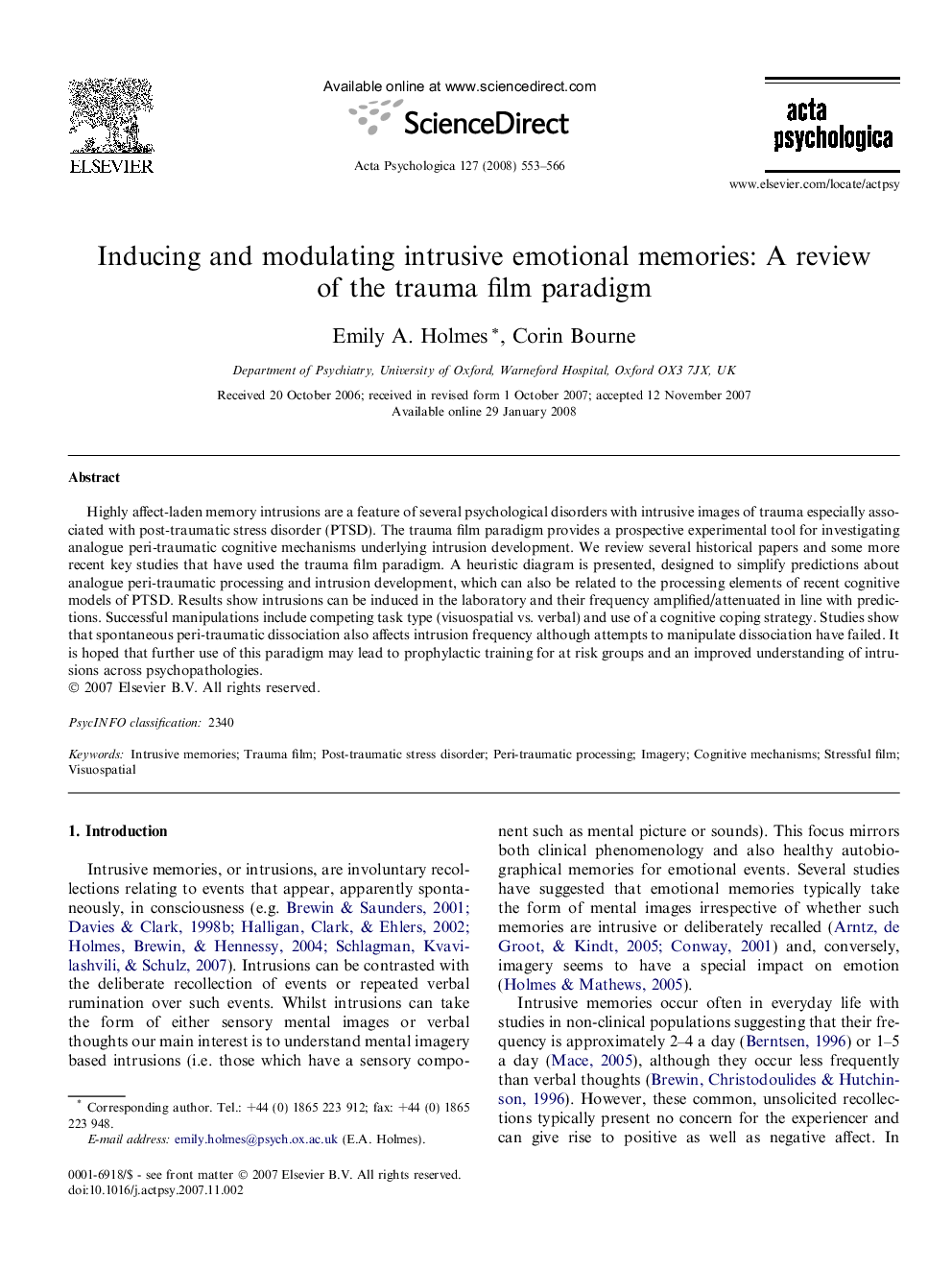| Article ID | Journal | Published Year | Pages | File Type |
|---|---|---|---|---|
| 920436 | Acta Psychologica | 2008 | 14 Pages |
Highly affect-laden memory intrusions are a feature of several psychological disorders with intrusive images of trauma especially associated with post-traumatic stress disorder (PTSD). The trauma film paradigm provides a prospective experimental tool for investigating analogue peri-traumatic cognitive mechanisms underlying intrusion development. We review several historical papers and some more recent key studies that have used the trauma film paradigm. A heuristic diagram is presented, designed to simplify predictions about analogue peri-traumatic processing and intrusion development, which can also be related to the processing elements of recent cognitive models of PTSD. Results show intrusions can be induced in the laboratory and their frequency amplified/attenuated in line with predictions. Successful manipulations include competing task type (visuospatial vs. verbal) and use of a cognitive coping strategy. Studies show that spontaneous peri-traumatic dissociation also affects intrusion frequency although attempts to manipulate dissociation have failed. It is hoped that further use of this paradigm may lead to prophylactic training for at risk groups and an improved understanding of intrusions across psychopathologies.
